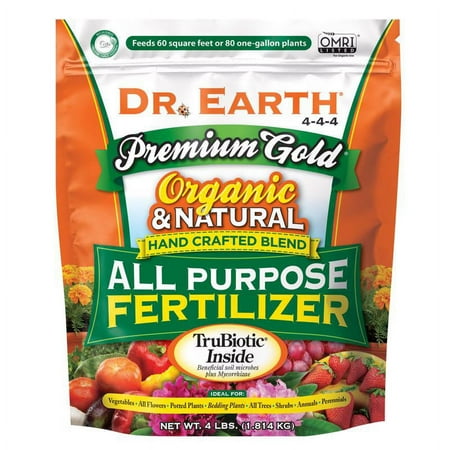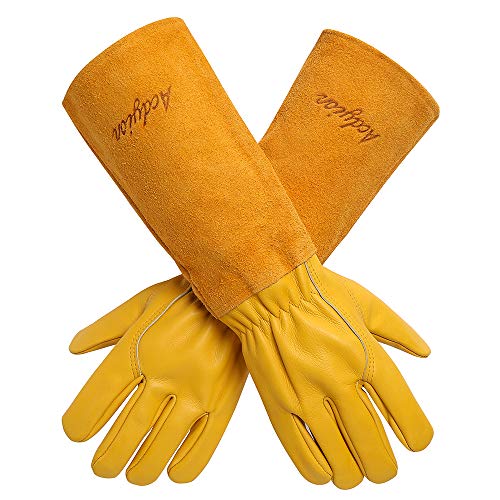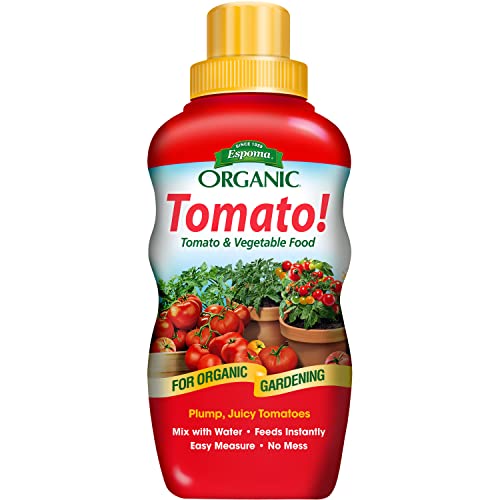How to fertilize sweet peas – expert advice from a professional gardener for long-lasting, fragrant flowers this summer
Feeding your sweet peas will help to extend the floral show
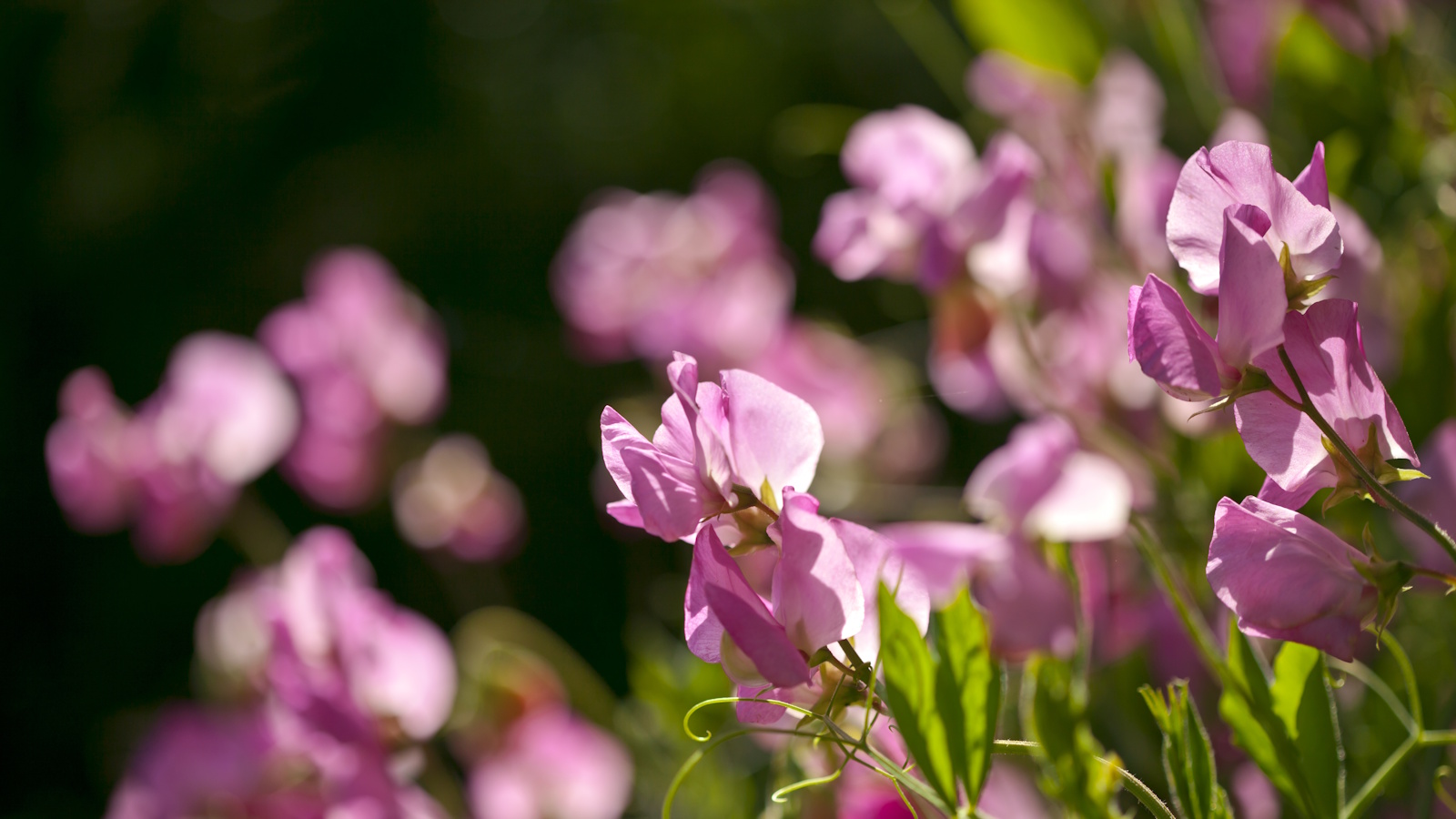

I’ve loved sweet peas for as long as I can remember. I mean, who couldn't be obsessed with their ruffled little petals and unrivalled scent? My all-time favorite? 'Matucana,' most probably, a heritage variety with bi-colored petals of deep purple and mauve. But I also have a soft spot for the almost-black blooms of 'Windsor,' which look just as good in a vase as they do growing on the patio.
If you’re anything like me, you’ll be keen to squeeze out as many weeks of sweet pea flowering as you can. And while it’s true that every flower has its natural arc, a little timely feed can go a long way in prolonging the floral display. Think of it as giving your sweet peas a boost just when they are beginning to flag.
So, whether you are growing sweet peas in borders or containers this summer, here’s when and how to fertilize them, including tips on the best products for the best results.
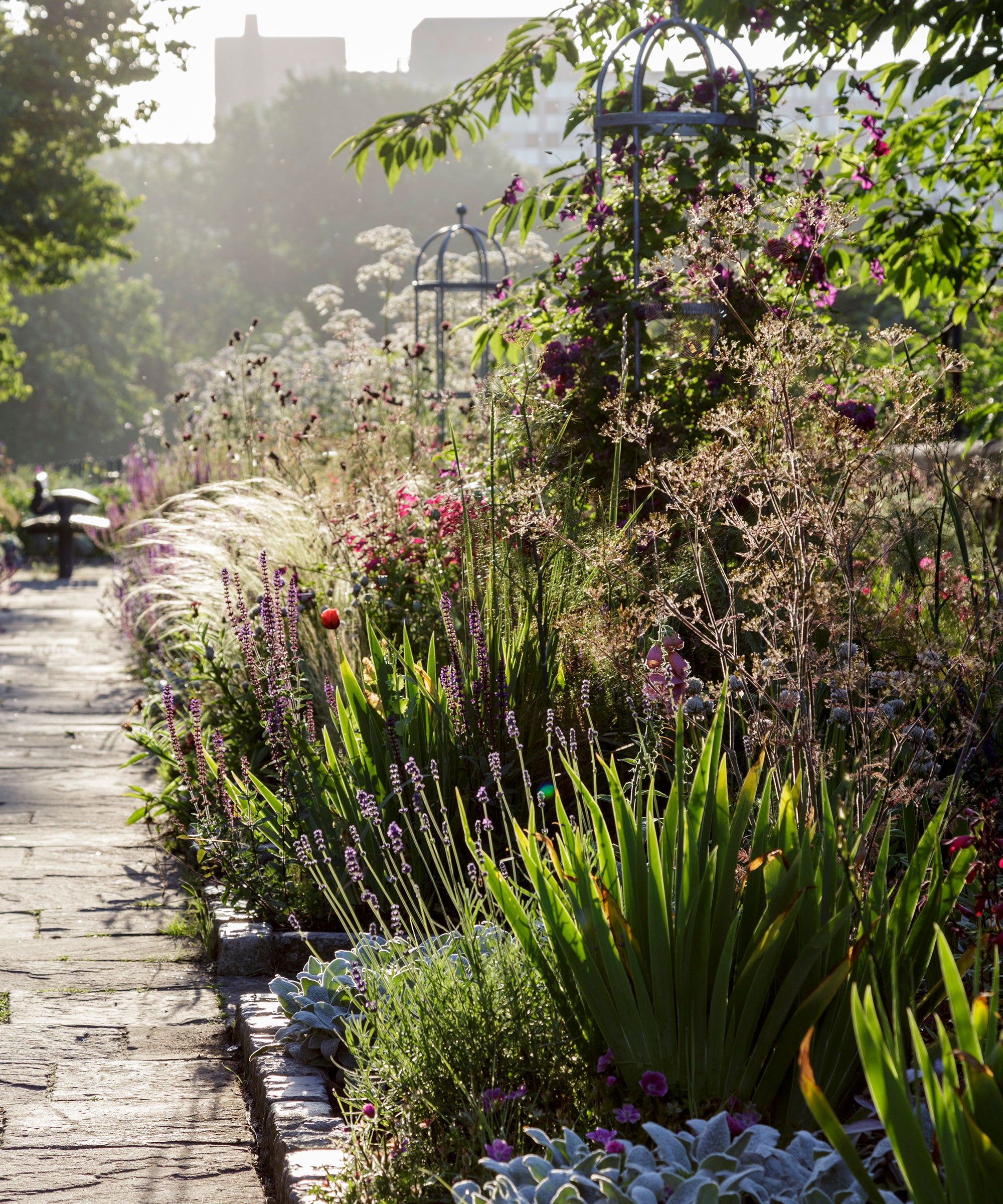
Getting the most out of sweet peas
Sweet peas are some of the best fragrant flowers, typically producing a sweet, floral aroma that is perfect for growing in cuttings patches.
Learning how to fertilize sweet peas can help extend their season, which usually lasts until the end of July. However, with a little feed, you can prolong these beautiful blooms for a little while longer.
When to fertilize sweet peas
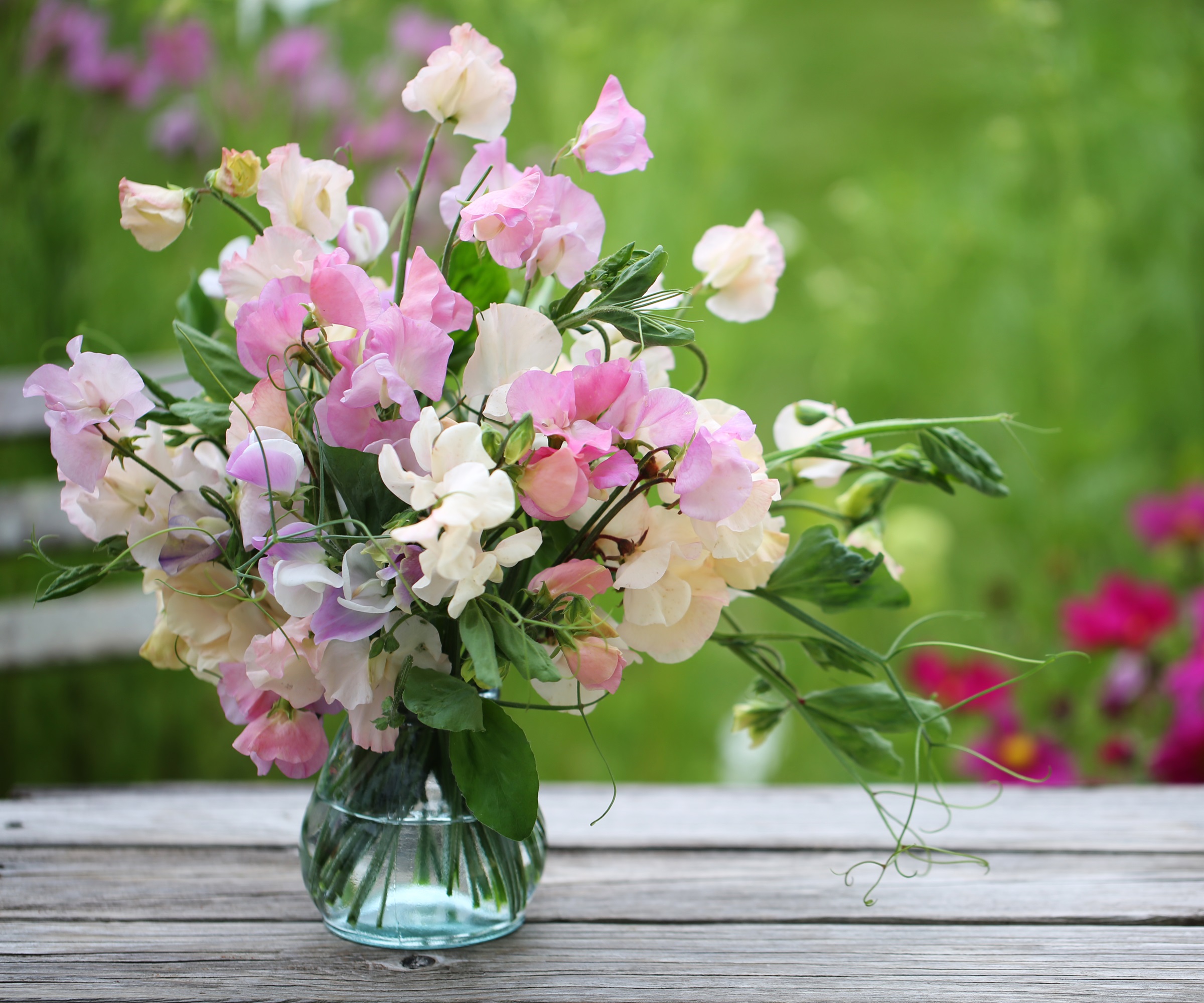
It is best to start feeding these cut-and-come-again flowers early in the growing season, just as you begin to spot flowers developing.
I would suggest sticking to a regular feeding schedule from around late spring onwards.
Design expertise in your inbox – from inspiring decorating ideas and beautiful celebrity homes to practical gardening advice and shopping round-ups.
However, if you have yet to fertilize, don't stress or worry; it is never too late to start. Even one application of feed can help these hungry climbers.
If you’re growing them in rich ground, a fortnightly feed will more than suffice, particularly if you mulch your borders.
But for climbers growing in pots, I would suggest a weekly feed, largely because container plants are entirely reliant on you, the gardener, for water and nutrition.
How to fertilize sweet peas
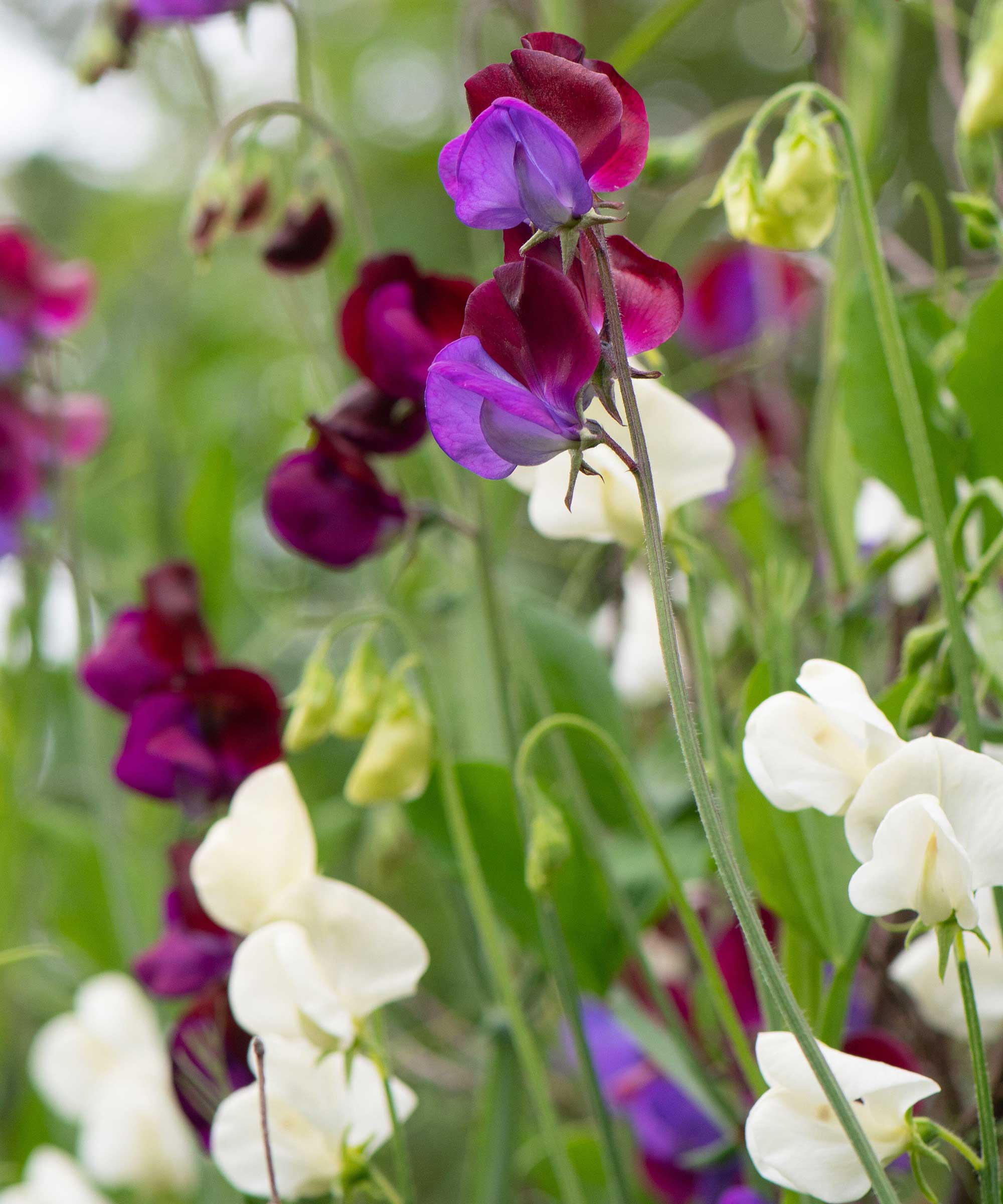
There’s nothing overly confusing or complicated about fertilizing sweet peas, but it is important to use the right products for the job.
A general-purpose fertilizer will do just fine, but for serious flower production, opt for one higher in potassium.
In terms of plant fertilizer numbers (that you find on the packaging of every plant feed), you are looking for something with a higher final number, such as 4-5-8 or 5-6-9.
Something like this organic tomato fertilizer from Burpee, available from Amazon now, will do the job.
Try to avoid anything too nitrogen-heavy, which will encourage your sweet peas to produce more foliage, at the expense of flowers.
If you are going away for a few weeks on vacation, or perhaps you are time-short, consider using an organic slow-release fertilizer, available from Walmart, which will take away the stress and effort.
And, finally, remember to deadhead sweet peas religiously, spending five minutes every few days snipping any faded flowers. You may find that the blooms appear on shorter stems as the season progresses, but in my opinion, any flower is better than no flower.
FAQs
When should I stop feeding my sweet peas?
When your plant is producing fewer and fewer blooms, usually by late July or August, it is time to stop feeding. Once you have reached this stage, no amount of fertilizer can bring the plant back (that is just the cycle of the growing season, sadly).
Be sure to leave one or two faded flower stems on your plant, and allow them to go to seed. This way, you can harvest, store and sow sweet peas again next year, all without spending a dime.
For more information, see our guide on how to harvest sweet pea seeds.
Shop fertilizing essentials

Thomas is a Content Editor within the Gardens Team at Homes and Gardens. He has worked as a professional gardener for both public spaces and private estates, specializing in productive gardening, growing food and flowers. Trained in Horticulture at the Garden Museum, he has written on gardening and garden history for various publications, including The English Garden, Gardens Illustrated, Hortus, The London Gardener and Bloom. He has co-authored a Lonely Planet travel book, The Tree Atlas, due out in 2024.
You must confirm your public display name before commenting
Please logout and then login again, you will then be prompted to enter your display name.
